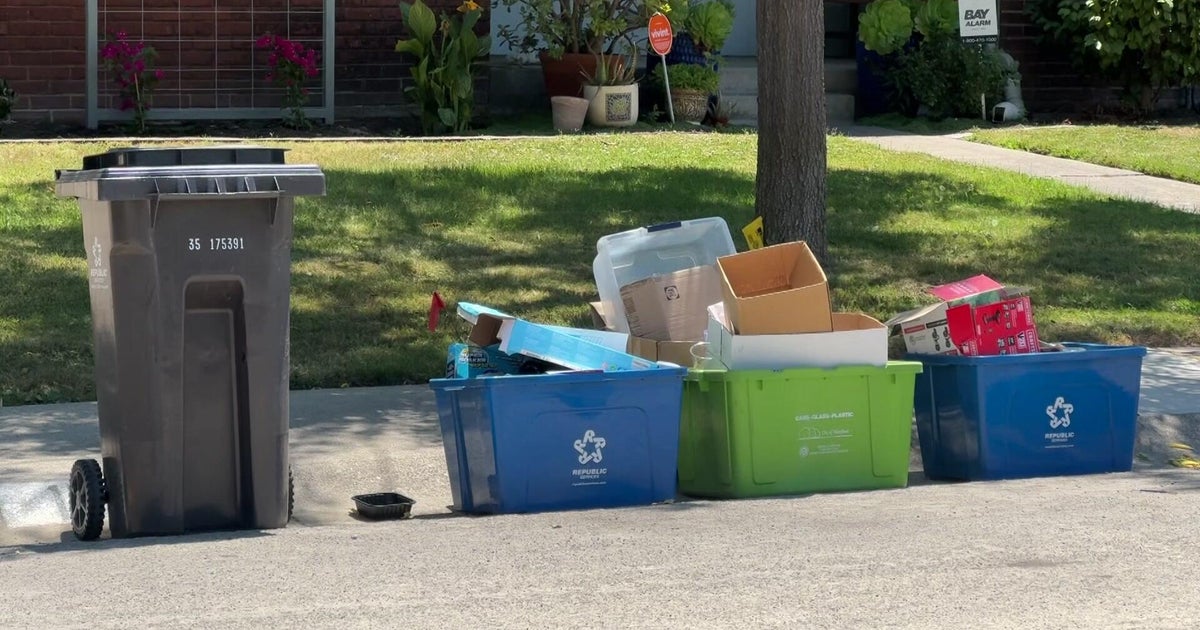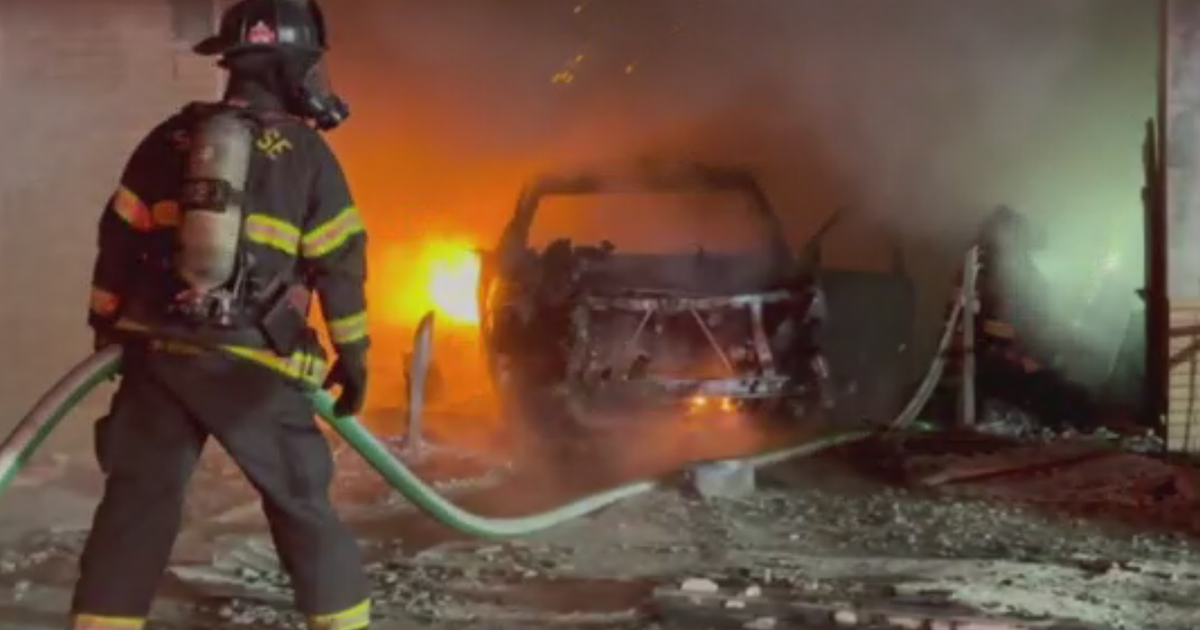Bay Area Power Shutoff Survival Guide
SANTA ROSA (CBS SF) -- Nearly 50,000 Wine Country homes and businesses began going dark Wednesday morning in the latest round of Pacific Gas and Electric power outages, but hours later weather conditions had improved enough to allow the cancellation of planned blackouts in five other Northern California counties.
Residents in Napa and Sonoma counties began losing electricity at about 7 a.m. Power was also cut farther north in portions of Mendocino, Lake and Yolo counties, said Katie Allen, a PG&E spokeswoman.
Nearly 170,000 homes and business lost electricity in the first wave of outages Wednesday morning. But weather conditions improved enough by Wednesday afternoon to allow the utility to cancel planned power outages in El Dorado, Nevada, Placer, Sierra, Yuba counties and western Sonoma County.
FOR THE LATEST ON THE OUTAGES: CBSN BAY AREA – KPIX 5 24/7 Digital News Channel
The National Weather Service's Red Flag Warning for the North Bay and the East Bay hills went into effect at 4 a.m. with winds predicted to pick up to 20-30 mph with gusts topping 60 mph at the highest peaks. The eastern winds would also bring with them plunging humidity levels.
As of 6 a.m., a 71 mph gust had been clocked at Mt. St Helena, 53 mph on Mt. Diablo in the East Bay and 33 mph at the Napa Airport.
Winds and low humidity levels are not the only forces of Mother Nature at work in Northern California. The region has also endured near drought-like conditions.
A virtually rainless fall has left brush bone-dry. One Napa County reporting station hasn't seen a measurable drop of rain since mid-September — the first time that's happened since 1905, said Scott Strenfel, PG&E's principal meteorologist.
The northern Sierra Nevada has seen a fraction of an inch of rain in the past two months instead of the usual 5 inches, he said.
"This lack of rain is keeping the threat of fire very real, this late in the season, in many areas," Strenfel said.
PG&E said once the high winds subside, crews would inspect the de-energized lines for possible damage during the wind event, before power would be restored in stages.
The utility said it hoped to have all customers back up by end of day Thursday, based on the current weather conditions.
Updates to the possible public safety power shutoffs would be issued again 24 hours prior and again four hours prior, according to PG&E. The utility also said customers who have provided their contact information to PG&E will be notified by phone, text and email.
Here are the projected Bay Area planned power outages by county and city:
- Lake -- 13,370 (homes and businesses) -- Clearlake, Cobb, Finley, Hidden Valley Lake, Hopland, Kelseyville, Lakeport, Loch Lomond, Lower Lake, Middletown
- Mendocino -- 3,080 (homes and businesses) -- Gualala, Hopland, Point Arena,
- Napa -- 11,180 (homes and businesses) -- Angwin, Calistoga, Deer Park, Lake Berryessa, Napa, Oakville, Pope Valley, Rutherford, Yountville
- Solano -- 1,970 (homes and businesses) -- Fairfield, Suisun City, Vacaville
- Sonoma -- 38,376 (homes and businesses) -- Annapolis, Bodega, Bodega Bay, Calistoga, Cazadero, Cloverdale, Duncans Mills, Forestville, Geyserville, Glen Ellen, Guerneville, Healdsburg, Jenner, Kenwood, Monte Rio, Penngrove, Rio Nido, Santa Rosa, Sonoma, Sea Ranch, Stewarts Point, Villa Grande, Windsor
Santa Rosa City Schools district announced that Tuesday that Maria Carillo High school would be closed on Wednesday, November 20 due to the PSPS. All after-school programs, such as athletics and childcare, are canceled at the campus on Wednesday.
The Rincon Valley Unified School District reports the following schools will be closed Nov. 20-21:
- Sequoia Elementary School (Sequoia Elementary School sixth-graders will go to camp as planned)
- Austin Creek Elementary School
The Geyserville Unified School District will remain open Nov. 20-21.
The Response.CA.Gov website combines emergency response, recovery and resilience information into a single place for easy access by users. It is a one-stop portal that includes local and state resources, health services, shelters and housing, preparedness information, and more.
Here are some tips to help you and your family survive a power outage.
- Sign up for PG&E alerts so you can be quickly informed if a power outage is about to begin in your neighborhood. It is also a good idea to sign up for alerts with your county.
- On Tuesday evening before going to bed, make sure to have all your electronic devices fully charged.
- Fill up your gas tank on your way home from work -- most gas pumps are electronic and will not work in an outage.
- Stop by the ATM and withdraw cash -- grocery store cash registers are electrically powered.
- Stock up on seven days of food, water, and flashlights and batteries. If you are still using old incandescent bulbs, this might be a good time to upgrade. LED bulbs last much longer.
- If you have an automatic garage door opener make sure you know how to disengage it and open the door manually.
- If you have solar panels, they will not power your house. Only those with a home battery or special converter can get power from their panels.
- Prepare yourself for slow driving -- traffic lights will not be functioning in the neighborhood impacted by the power outage.
- Be a good neighbor -- if you have elderly or infirm neighbors check on their well being
- If you use a generator -- make sure it is at least 20 feet from your home with the engine exhaust directed away from windows and doors.
- Talk with your building manager if you live or work in a building that has elevators or electronic key card access to understand how they will deal with a possible multi-day outage.
- Break out your earthquake survival kit to use.
What to pick up at the store prior to the shutdown
- A manual can opener
- Bottled water -- although water service may not be impacted it may be wise to have at least a two-day supply
- Non perishable and food that is easy to prepare without an electric stove for you, your children and your pets
- Two large bags of ice -- these can be used to keep your refrigerated cool several hours
- Flashlight lights and plenty of batteries. Safety experts say to avoid using candles.
What to do after the power goes off
- Unplug or turn off appliances, equipment and electronics to avoid damage caused by surges when the power is restored.
- Leave a single lamp on to alert you when the power returns. Then, turn your appliances on, one at a time.
- Your refrigerator will keep food cold for about 4 hours and a full freezer will keep its temperature for about 48 hours--as long as the freezer and refrigerator doors are kept closed.
- Be sure to use generators, camp stoves or charcoal grills outdoors only. Do not use a gas stove for heat.
- For food safety tips, the U.S. Dept. of Health & Human Services has a detailed list at their site: Food Safety During A Power Outage.
PG&E Resources and Links (Please note the PG&E website may be slow to respond because of traffic)
- PG&E Safety and Alert Center
- The agency has a projected PSPS outage map on the site. If the outage maps aren't working on the site, during the last shutdown PG&E posted maps of affected areas for individual counties on their Twitter page.
- After the issues with the website during the first PSPS, PG&E set up a sister website where customers can determine whether their power will be shut off.



